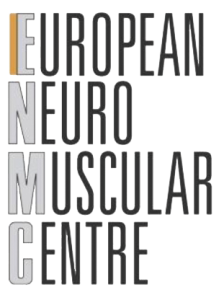Cognitive and behavioral abnormalities in pediatric DM1 – what should we measure in preparation for clinical trials?
- Number 284
- Date 24 January 2025
Location: Hoofddorp, The Netherlands
Title: "Cognitive and Behavioral Abnormalities in Pediatric DM1 – What should We Measure in Preparation for Clinical Trials?"
Date: 24-26 January 2025
Organisers: Prof V. Sansone (ITA), Prof N. Johnson (USA)
Early career researchers: Dr F. Trucco (ITA), Dr D. Sweere (NL)
Translations of this report by:
Italian by Dr F. Trucco (ITA)
Dutch by Dr D. Sweere (NL)
French by Dr N. Angeard (FRA)
German by Prof C. Kornblum (GER)
Participants: Dr G. Bassez (FRA), Dr G. Gourdon (FRA), Dr E. Wang (USA), Dr. M. Gomez Pereira (FRA), Prof. C. Kornblum (GER), Dr S. Pozzi (ITA), Dr H. Braakman (NL), Dr K. Berggren (USA), Dr. N. Nikolenko (UK), Dr. N. Angeard (FRA), Dr. V. Stoyanova-Beninska (NL), Dr I. Gaudet (CAN), Dr. J. Eisengart (USA), Dr S. Klinkenberg (NL), M. Codegoni (patient representative, ITA), D. Sala (patient representative, ITA), J. van Gent (patient representative NL), B. Haasakker (patient representative, NL).
Background information Myotonic Dystrophy type 1 is one of the most variable diseases in all of medicine with onset ranging from the neonatal period to late adulthood. In all cases it is a disease that causes symptoms throughout the body, including the brain. Cognitive-behavioral aspects of adult-onset DM1 have been extensively described. For pediatric onset DM1 however, the trajectory of cognitive-behavioral development and the relation to brain involvement has not yet been characterized in depth.
Workshop aims (i) to define a common set of diagnostic tests to address cognitive and behavioral issues in children living with congenital and childhood DM1 that are age appropriate and (ii) to provide a minimal core testing protocol to be administered at baseline and over time to improve the care of patients; (iii) to discuss potential biomarkers of brain involvement that could be used in clinical trials based on current evidence and expert consensus.
Workshop outcomes/deliverables: Consensus was reached on disease-onset classification: Congenital-onset DM1 is defined as disease onset < 1 month and childhood-onset is defined as disease onset after 1 month of birth up until 18 years of age. Altogether, all children aged <18 should be referred to as pediatric DM1. Literature reviews that were presented showed a consistent profile of cognitive-behavioral problems, that were also clinically recognized. General intelligence, visuospatial functions, attention and executive functions were mostly affected. It is important to harmonize cognitive-behavioral assessment for: (i) screening of at-risk children that should be directed to genetic counseling, (ii) optimizing international care and clinical management regarding cognitive-behavioural wellbeing during different developmental stages (iii) designing reliable, feasible and sensitive outcome measures in anticipation on clinical trials. Even though harmonizing cognitive testing protocols proved to be challenging, a consensus was reached on a core cognitive testing battery to be administered internationally. The core testing protocol will be disseminated through a full report of the workshop and via documents shared by patient associations. It was also recognized that a combination of problems with attention, behavior, and executive function should be considered as potential symptoms of childhood onset DM1 in the absence of muscle weakness.
Impact for the patients and their families Harmonizing cognitive testing protocols will optimize care and clinical management internationally and will allow for multi-center natural history studies which will provide a more in-depth insight of brain involvement. Patients’ perspective was taken into account when developing the testing protocol.
Next steps: Future research will further explore additional and more exploratory batteries of assessment including additional neuropsychological testing, but also the potential role of brain imaging as biomarker. The preclinical data that was presented during the workshops from different labs provided additional insights into the role of grey and white matter abnormalities in the clinical picture. More specifically, future steps will aim to further clarify the impact of involvement of the cerebellum and corpus callosum in the cognitive-behavioral profile in pediatric DM1.
A full report has been published in Neuromuscular Disorders (PDF).

